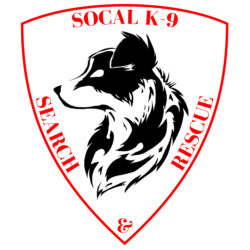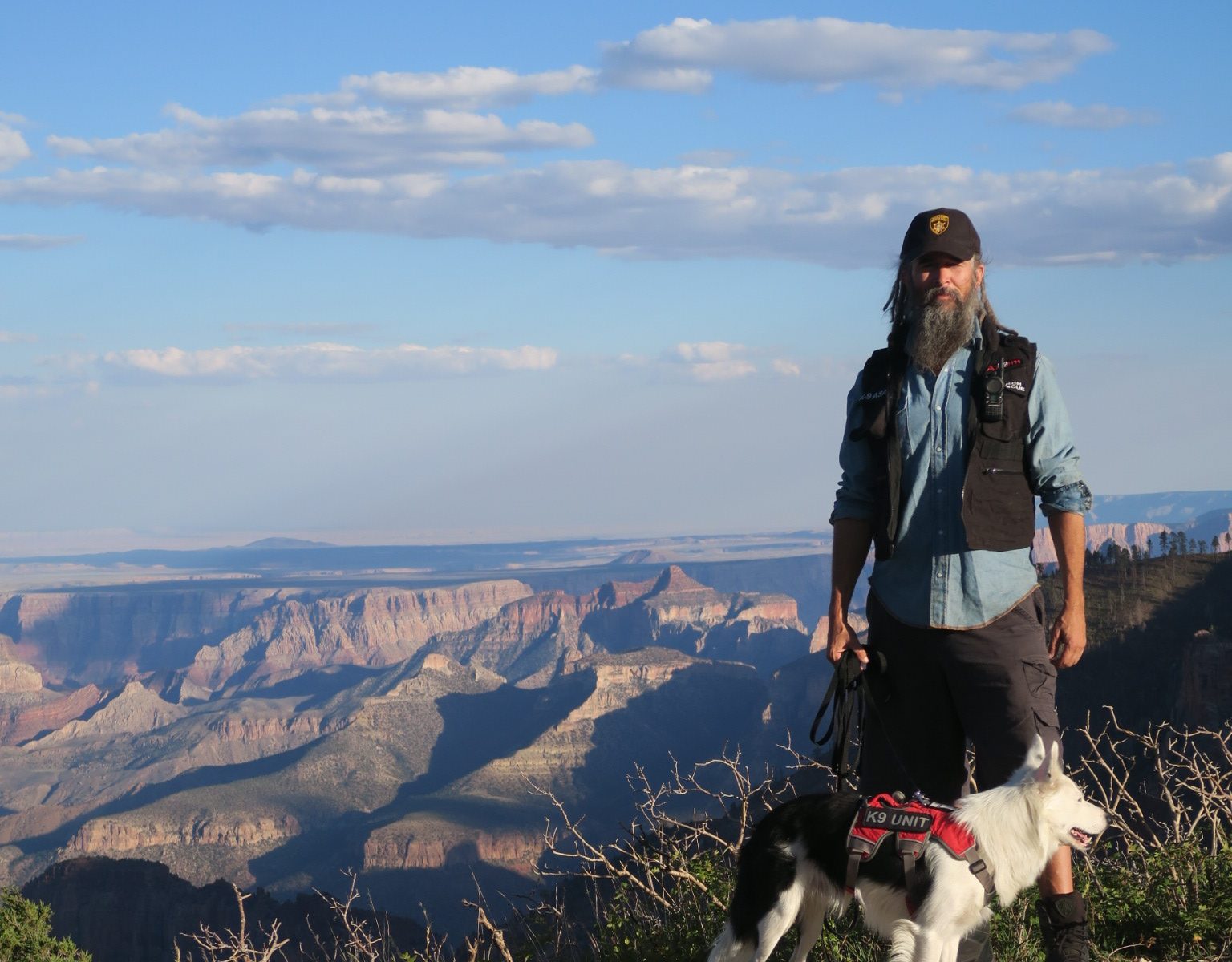
Training a dog for K-9 Search and Rescue takes literally thousands of hours and many years to have both the handler and dog fully certified and prepared to be deployed for emergency situations. It is a volunteer job that all of our handlers and supporters have invested ample time and funds for the purchasing of equipment, the dogs themselves, the training for the handlers, the training of the dogs, the cost of transport for searches and finally training the dogs to find the lost and missing people. Our border collies at SoCal K-9 Search & Rescue are super-athletes and are receiving the highest level of training these dogs can receive.

At SoCal K-9 Search & Rescue, each dog has a specialty he is being trained in that can also act as a support during a search for the other dog. Both K-9 Kota and K-9 Shiloh have been trained since they were 10 weeks old and are continually training in air scent/area search and tracking/trailing search and rescue. Airscent/area search is when a dog works a large area relatively quickly by using wind direction to their advantage while off leash. Tracking is a test of the dog’s ability to follow human scent and identify articles along the way while on a long lead. Trailing is a test of a dog’s ability to distinguish and follow one person’s scent and identify that person also using a long lead. Our dogs are trained to airscent/track/trail on various terrains such as grass, gravel, concrete, asphalt, sand and wooded areas – otherwise known as VST or Variable Surface Tracking. Tracking/Trailing dogs are a valuable asset in locating missing children, Alzheimer’s patients and other missing people.

In reference to the search and rescue handlers on our unit, each handler receives training in search methods and strategies, understanding training variables, basic and advanced scent theory, managing disasters and critical incidents, K-9 First Aid and CPR, record keeping and maintenance training. Above all, knowing your team and how they react in emergency situations is crucial. In addition to the above training, a lot of time is spent observing the dogs in a multitude of situations to watch for their unique strengths, weaknesses, body language and “tells” in order to capitalize on them. Together, as a human and dog team, these two high energy border collies work synergistically with their handlers to return your loved one back home to you as efficiently possible.

